The Alaskan business as old as America
Alaska Commercial Company has provided merchandise to fur traders, miners, and rural Alaskans for more than 150 years North of 60 Mining News – January 29, 2021
Last updated 1/28/2021 at 2:42pm
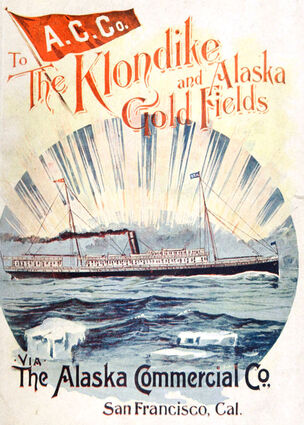
Wikimedia Commons
The cover of an 1898 advertising guidebook issued by the Alaska Commercial Company for adventurers travelling north to take part in the Klondike Gold Rush.
"Less than a year after the formal transfer of Alaska from Russia to the United States, there was formed under California law a corporation named the Alaska Commercial Company. Its home office was in San Francisco, but its activities were to center in Alaska, where it soon became a power in the land. Indeed, at sometimes and places it was the only effective power."
This an excerpt from a piece written by Frank H. Sloss in July 1977 for The Pacific Northwest Quarterly titled, "Who Owned the Alaska Commercial Company?"
According to some records after the purchase of Alaska from Russia in 1867, there seemed to be some dispute regarding the true owners of the ACC.
Directly from the source, the ACC website states that two San Francisco merchants by the names of Lewis Gerstle and Louis Sloss bought the company from Russia in 1868 and thus founded the Alaska Commercial Company.
Alternatively, a collection of company records held at Stanford University state additional persons. Such as the firm of Hutchison, Kohl & Company, which included Gerstle and Sloss as well as four more individuals comprising the firm.
Further still, in the aforementioned article written by the descendent of Louis Sloss, a seventh individual by the name of Captain Gustave Niebaum was quickly invited to join the firm along with the six previous members.
Regardless of who believes truly owned the company, the inheritance of the Russian-American Company's fur trading empire was too big a pie for any one person to fully eat.
With Russian influence leaving the vast land of Alaska after the infamous Seward's Folly, these future Alaska Commercial Company owners did not think it so foolish, and due to clever business maneuvers, in a single swoop nearly all the Russian-American Company assets were purchased from the last Russian Governor which cemented the foundation of the now 150-year-old company.
Who really owned ACC?
Alaska Commercial Company's history goes back to 1776, when – under the flag of Czarist Russia – Catherine the Great, Empress of Russia granted trading rights to Gregor Shelikof and Ivan Golikof and formed a trading company in the Alaska Territory that was still under Russian rule.
It would not be until 23 years later, in 1799, when the trading company would receive trading privileges on the western coast of the growing United States and become the Russian-American Company.
After the 1867 purchase of Alaska by U.S. Secretary of State William H. Seward for US$7 million (nearly US$130 million with inflation today) a man by the name of Hayward M. Hutchinson, a Baltimore businessman, traveled west in the company of commissioners designated to perform the symbolic transfer of Alaska.
It was during this voyage that he became passionate about business opportunities in the Alaska territory, the newest frontier.
Arriving in San Francisco in September 1867, he traveled to Sitka in December and in a single coup, succeeded in purchasing from the last Russian governor, Prince Dmitri Maksutov, nearly all the commercial assets of the Russian-American Company.
However, he could hardly have done this without the financial backing of Louis Sloss and Company, whom he met during his stay in San Francisco.
Louis and Lewis, both California pioneers of German-Jewish decent, were lifelong associates in all their ventures, further cementing their business intimacy by marrying two sisters.
After the January 1868 takeover, a stream of valuable merchandise started to flow out of the old Russian warehouses from Hutchinson in Sitka to Sloss and Gerstle in San Francisco.
While this was ongoing, a ship officer in the Russian-American Company's employ by the name of Gustave Niebaum, bought out one of the company's vessels and traveled to the Pribilof Islands to pick up a cargo of sealskins to sell in San Francisco. Making it no secret, his trip caught the attention by two men, William Kohl, an American shipwright of Pennsylvania-Dutch descent and Leopold Boscowitz, who, with his brothers established a fur-trading business second in size in North America only to that of the Hudson's Bay Company.
Kohl and Boscowitz conceived a plan to acquire the cargo of sealskins from Niebaum when he reached San Francisco, hoping to break into the market of permanent sealskin trade.
For this they sought the help from a well-known San Francisco fur dealer, August Wassermann, also a German-Jewish California pioneer, known by Sloss and Gerstle but with no dealings among them.
Late January 1868, Hutchinson, Kohl and Boscowitz found themselves on the same ship from Sitka to San Francisco. Suddenly, by serendipitous means, the men collaborated and obtained approvals from all previous associates, thus the firm of Hutchinson, Kohl and Company with its six original partners was formed, and the addition of Captain Niebaum being added in March later that year.
So according to Frank H. Sloss, descendant of Louis Sloss: Hutchinson, Kohl, Sloss, Gerstle, Boscowitz, Wassermann and Niebaum were the seven gentlemen to establish the foundation and eventual longevity of the Alaska Commercial Company, which was further approved by Prince Maksutov who had been aboard the ship upon Hutchinson's return from Sitka and personally escorted the men and toured them through their new assets in San Francisco.
Things were not so smooth sailing for the firm after establishing itself, however. While Hutchinson oversaw the start of their sealskin operation, with the intention of hiring skilled Aleut natives to abide by traditional conservation measures developed by the Russians, a new sealing expedition turned up in the Pribilofs, unwilling to comply with healthy seal hunting, a firm called Williams, Haven and Company, a group based in New London, Connecticut, sent a crew to hunt without restraint. Hutchinson, unable to stop this pillaging of finite resources, struck a deal and pushed all other competitors out, the result however, was less than ideal.
The initial conflict resulted in the killing of seals in unprecedented and dangerous numbers – an estimated 250,000 seals were killed at St. Paul alone.
This news alarmed Congress and prohibited all killing of fur seals in Alaska, so things stood after the fur venture flew out of control until the Alaska Commercial Company officially came into existence in October 1868.
It would not be until 1870 when Congress would install a seal leasing agreement and the ACC would begin its decades long monopoly on fur trade, that is, until the Klondike gold rush in 1896.
The Company and the Rush
In the original articles of incorporation in 1868, the stated purposes of the Alaska Commercial Company were "...to buy, sell, rent and lease real estate...to erect buildings...to buy, sell, exchange...merchandise, stocks, bonds, franchises...to build tramways and roads...to catch and pack fish...to manufacture..."
The company established stations in Alaska at Nome, Kodiak, Sunrise, Eagle City, Circle City, St. Michael, Unga, Unalaska and others, and in Dawson in Canada, as well as various other Canadian stations.
The Alaska Commercial Company easily became the economic heartbeat of much of Alaska for around the forty years following the U.S. purchase. If you received mail, stirred sugar into your tea, owned a pair of boots, or opened a can of peaches from 1868-1908, chances are it was due to the AC Store.
Yet, the merchandise and mail contracts were minor compared to the company's monopoly on fur trade in Alaska until 1890, once the seal lease expired. Even still, the greater Alaska territory was still filled with trappers and hunters bringing furs and pelts and skins of all kinds from across the Last Frontier.
Not just seal skins, but fox, bear, and otter, yet due to over hunting previously, statutes had been put in place only allowing Alaskan natives the privilege of hunting fur-bearing sea mammals, of which the Alaska Commercial Company sponsored trips around the peninsula with prices in 1900 for sea otter pelts reaching as high as US$200 per pelt, it was an extremely lucrative venture.
However, in 1901, because of increasing competition in the sealskin trade, the Alaska Commercial Company merged with the International Mercantile Marine Company and Alaska Goldfields Ltd., to form two new companies. The Northern Navigation Company and the Northern Commercial Company, which functioned the same, even maintaining the original name of the Alaska Commercial Company for familiarities sake.
Once the Klondike Gold Rush struck, the ACC became a lifeline throughout most of Alaska and Northwest Canada, the company played a rather magnificent role of ocean and river transportation, food and other merchandise necessities and even, where needed, rudimentary banking and quasi-governmental financing services.
Miners, pioneers, and stampeders alike, traveled from station to station, for places of rest, to send and receive mail, for the latest news and gossip regarding recent strikes and discoveries, for supplies, you name it.
More than a supply depot, the Alaska Commercial Company stores were beacons of civilization in the wilderness of the Alaskan frontier.
Although its business as a grocer and supplier was pennies compared to the money the company brought in during its fur trading years, the certainty of finding an AC store after a long trek through miles of wind and snow, to pick up your poke and trade raw minerals for goods and services was all an early 20th century trailblazer needed.
Its most spectacular gesture was having four palatial Mississippi-style riverboats built at Louisville, knocked down for shipment to the North, reassembled and put into service between St. Michael and Dawson.
However, by 1910, the company ceased to expand, gradually declining after almost half a century of successful fur trading, and most of the previous founders having passed away.
In 1922, the assets of the Alaska Commercial Company, in actual name the Northern Commercial Company, were sold once more to a new corporation of the same name organized by a group of long-time employees, moving the headquarters from San Francisco to Seattle.
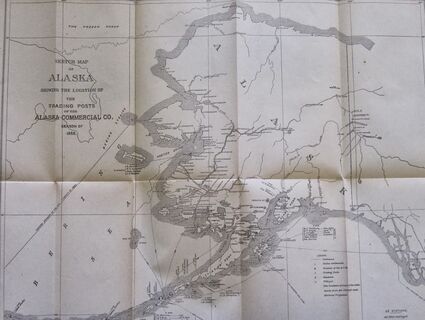
Kodiak Museum/Baranov Museum
An 1888 map of Alaska showing the locations of all the Alaska Commercial Company's trading stores and listing all known settlements within AC's trading districts. Currently in possession by the Kodiak Museum in Alaska.
Finally, in 1940, the company added to their holdings the last two posts still maintained by the Alaska Commercial Company in Unalaska and Dutch Harbor. The company operated mostly as a grocer and supplier to rural areas, and is still considered one of the largest employers in Alaska.
In 1977, the Northern Commercial Company itself reached the stage of liquidation selling off various segments of its business to other interests. But one portion – the branch store operations in the smaller communities in Alaska – was retained by the owning families and the company came full circle to be owned as and by the Alaska Commercial Company once more.
Yet, in 1992 the company was once again purchased, however, by The North West Company who retains ownership to this day, maintaining the largest North American rural retailer status.
As of 2017, the company celebrated its 150th year anniversary, while it may have shuffled names and owners, the core of the business stayed the same, and has its roots back to the first two traders from Russia at the same time as the founding of the United States of America in 1776.


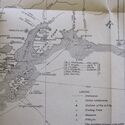
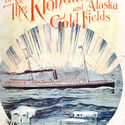
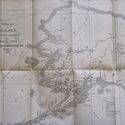















Reader Comments(0)